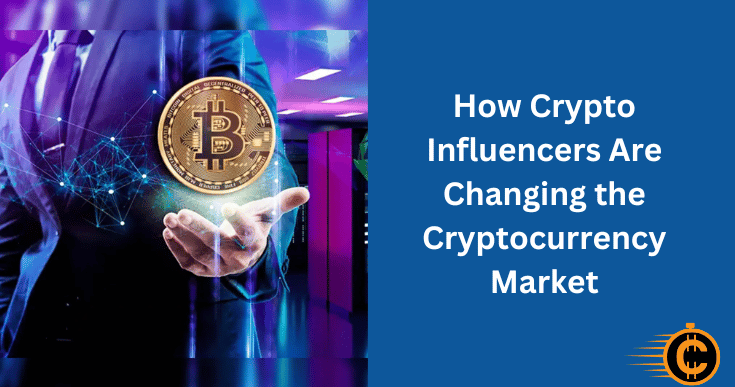In recent years, the cryptocurrency landscape has experienced seismic shifts driven not only by technological innovation and institutional adoption but also by the emergence of a new and powerful force—crypto influencers. These digital personalities have grown into key opinion leaders (KOLs), shaping narratives, impacting market sentiment, and steering both novice and seasoned investors through the volatile world of cryptocurrencies. As the industry matures, the influence of these figures continues to evolve, creating both opportunities and challenges for market participants.
Who Are Crypto Influencers?
Crypto influencers are individuals—often investors, developers, educators, or traders—with significant followings on platforms like X (formerly Twitter), YouTube, TikTok, Instagram, and Discord. They use these platforms to share market insights, trading strategies, news analysis, project reviews, and educational content. Many influencers started as early adopters or enthusiasts and have since built loyal communities that trust their perspectives on market trends and investment opportunities.
Notable crypto influencers include figures like Anthony Pompliano, Andreas M. Antonopoulos, BitBoy Crypto, Ivan on Tech, and EllioTrades, among others. Their reach and credibility can significantly impact the visibility and perceived legitimacy of blockchain projects.
The Power of Influence in a Decentralized Market
Unlike traditional financial markets, which rely heavily on institutional research and regulatory oversight, the cryptocurrency market is largely decentralized, fast-moving, and heavily influenced by social sentiment. This dynamic gives crypto influencers considerable power. With a single tweet or video, an influencer can ignite interest in a lesser-known altcoin or drive skepticism toward an emerging project.
The GameStop and Dogecoin phenomena in 2021 underscored how collective online action—fueled by Reddit threads and tweets from influencers like Elon Musk—can disrupt financial markets. Although not strictly crypto influencers, Musk’s vocal support of Dogecoin highlighted how social media and influential personalities can catalyze price volatility and investor behavior.
How Crypto Influencers Are Shaping Market Trends
1. Driving Adoption and Awareness
Crypto influencers are instrumental in onboarding new users to the cryptocurrency ecosystem. Through educational content, tutorials, and market commentary, they simplify complex topics like blockchain consensus mechanisms, decentralized finance (DeFi), non-fungible tokens (NFTs), and smart contracts.
For example, influencers like Andreas Antonopoulos have authored books and hosted YouTube series that help demystify Bitcoin and Ethereum for non-technical audiences. By bridging the knowledge gap, influencers facilitate broader adoption and encourage responsible participation in the digital asset space.
2. Amplifying Project Visibility
In the crowded world of crypto startups and token launches, visibility is crucial. Many projects collaborate with influencers to increase their exposure. Influencers often receive early access to tokens, participate in pre-sales, or serve as brand ambassadors to promote projects across their channels.
While these partnerships can benefit both parties, they also raise ethical concerns around transparency and potential conflicts of interest. Influencers who fail to disclose paid promotions or personal investments can mislead followers, which underscores the need for more standardized disclosure practices within the industry.
3. Shaping Market Sentiment
The cryptocurrency market is highly sentiment-driven. Crypto influencers can act as sentiment multipliers, amplifying both bullish and bearish narratives. For instance, when influential voices express confidence in a project, token prices often surge due to a flood of investor interest. Conversely, skepticism or criticism can lead to sell-offs.
Social analytics tools increasingly monitor influencer sentiment as a key data point for market analysis. Some traders even employ “influencer tracking” as part of their trading strategies, anticipating market moves based on influencer behavior.
4. Creating Communities and Decentralized Media
Crypto influencers are community builders. Many have launched their own platforms—Telegram groups, Discord servers, and DAOs (Decentralized Autonomous Organizations)—where followers can interact, share knowledge, and collaborate on investment ideas.
These communities often evolve into decentralized media ecosystems, offering alternative narratives outside mainstream financial media. This democratization of information has allowed smaller voices to rise and challenge traditional gatekeepers. However, it also opens the door to misinformation, shilling, and pump-and-dump schemes.
Also VIsit : How Crypto influencers change the market ?
Opportunities and Challenges
The Upside: Education, Access, and Engagement
The rise of crypto influencers has brought a wave of educational content, increased access to market insights, and greater engagement across age groups and regions. Influencers play a vital role in making cryptocurrency accessible to global audiences, from first-time investors in Southeast Asia to Gen Z creators in the U.S.
By leveraging engaging formats—memes, livestreams, podcasts, and threads—crypto influencers have made financial literacy and blockchain education more appealing, especially for younger audiences. This new generation of investors is more likely to learn about cryptocurrencies from a YouTube video than a traditional finance textbook.
The Downside: Hype, Manipulation, and Regulation
However, the influence of crypto personalities is not without risks. The market has seen several instances where influencers have hyped tokens with little to no utility, sometimes leading to massive losses for retail investors. “Rug pulls” and pump-and-dump schemes have plagued the industry, prompting calls for greater accountability and transparency.
In response, regulators in jurisdictions like the U.S., U.K., and Australia have started cracking down on misleading crypto promotions. The U.S. Securities and Exchange Commission (SEC) has issued fines to several celebrities and influencers for promoting crypto assets without disclosing compensation.
As the line between community building and market manipulation becomes increasingly blurred, the crypto industry must grapple with the role and responsibility of influencers in shaping financial outcomes.
The Future of Crypto Influencers
Looking ahead, the role of crypto influencers will likely continue to expand, but with increasing scrutiny. Here are some trends to watch:
1. Professionalization of Influencer Roles
As the market matures, expect to see a more professionalized tier of crypto influencers who operate with journalistic standards, legal advisors, and compliance teams. These influencers may publish research-grade analysis, undergo licensing or certification, and collaborate with regulated firms.
2. Rise of AI-Driven Influencer Analytics
With the growth of AI, more platforms will analyze influencer sentiment in real time. These insights will be used by institutional traders, hedge funds, and algorithms to anticipate market trends and allocate capital. Tools like LunarCrush and Santiment are already offering such capabilities, creating a feedback loop between influencer activity and market behavior.
3. Increased Regulatory Oversight
Governments are likely to introduce stricter disclosure laws and advertising guidelines for crypto influencers. This may include mandatory disclaimers, platform-level enforcement, and penalties for misleading promotions. Regulatory clarity will help protect investors while legitimizing influencer marketing in crypto.
4. Influencer-Backed Tokens and DAOs
The next evolution could see influencers launching their own tokens or community-driven DAOs. These structures allow followers to participate in governance, earn rewards, and fund initiatives. Examples include creator coins and social tokens, which empower influencers to monetize content while offering utility to their communities.
Conclusion
Crypto influencers are playing a transformative role in the cryptocurrency market. They are not merely content creators or marketers—they are educators, analysts, community builders, and in some cases, gatekeepers to capital and visibility. Their ability to inform, inspire, and influence has helped drive adoption, shape sentiment, and democratize access to financial knowledge.
Yet with great influence comes great responsibility. As the market grows and regulatory oversight tightens, the role of crypto influencers must evolve to include higher ethical standards, transparent disclosures, and a commitment to empowering their communities through accurate and balanced information.
In a decentralized future where trust and reputation are digital currency, crypto influencers will remain pivotal players—guiding users through the complex, volatile, and exciting world of blockchain innovation.
FAQ’s
What are crypto influencers?
Crypto influencers are individuals with a significant following on social media platforms who share insights, opinions, and analysis about the cryptocurrency market. They often guide their audiences through investment strategies, blockchain education, and updates on trending projects, shaping market sentiment and influencing investor behavior.
How do crypto influencers impact the cryptocurrency market?
Crypto influencers impact the market by shaping public opinion and driving awareness about specific projects or trends. Their tweets, videos, and posts can cause price surges or drops, especially in the case of low-market-cap coins. They also help in accelerating crypto adoption and educating new investors about blockchain technology.
Which platforms do crypto influencers use most?
Crypto influencers are most active on:
Twitter (X) – for real-time market updates and sentiment
YouTube – for deep-dive analysis and educational content
TikTok and Instagram – for short-form crypto tips and news
Telegram and Discord – for community engagement and exclusive insights


